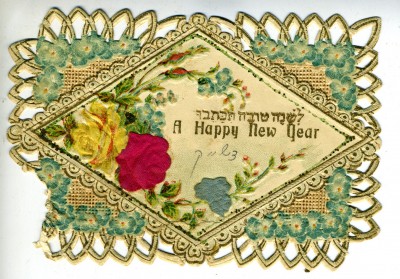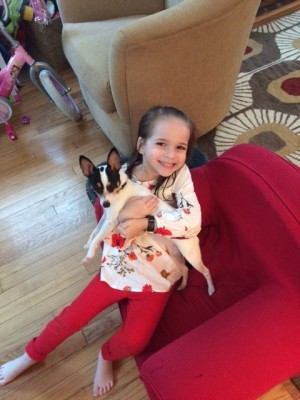Another New Year

A blog post by Associate Director Tracie Guy-Decker. Read more posts from Tracie by clicking HERE.
There are so many ways to count the year. Each of us celebrates at least a half a dozen new years every year. There’s January first, of course. But there’s also a fiscal new year (at the JMM, that is July 1). There’s also your birthday (mine is February 14, in case you were wondering). For folks in school or who teach school or who have kids in school, there’s the first day of the new school year. And then there are the Jewish New Years. There’s the first day of the year, in Nissan (the same month as Passover). And there’s Tu B’Shvat, the “new year for the trees.” And, of course, there is Rosh Hashanah.

The “head of the year” is actually the first day of the seventh month. So though we refer to it to our non-Jewish neighbors as the “Jewish New Year,” it’s more nuanced than that. Rabbi Arthur Waskow, in his book Seasons of Our Joy speculates, “perhaps it is the head of the year because it is raised toward heaven, away from the earth–while Pesach [in the first month of the year] celebrates a more earthly liberation, the freedom of our bodies” (1-2).
That distinction between the heavenly and the earthly is interesting. Unlike our secular New Year, when we all make resolutions to lose weight or quit smoking or eat healthier, at Rosh Hashanah, we are expected to make a different kind of resolution. Instead of more trips to the gym, we aim for fewer trips to judgement; rather than counting calories, we are meant to count blessings.
I’ve been thinking a lot lately about the idea of a new year, and about human capacity for change. Whether the resolution is to lose 10 pounds or to be kinder, we humans seem nearly incapable of making true and lasting change. On January first and on the first of Tishri, each year, we find ourselves in nearly the exact same situation as the year before. Even as we make the resolutions (or the confessions), we do so knowing that we will falter again–we will be right here next year. We do a dance with ourselves and with the Divine, but in the end, we always fail.
It is a depressing thought as I sit here writing on the third of Tishri.
And yet.
On this Rosh Hashanah, I had the honor of the third Aliyah at Baltimore Hebrew Congregation, chanting the blessings before and after the third Torah portion was read. I delivered the blessings as intended, and received greetings from my fellow congregants and the clergy. It was lovely, and I felt truly grateful. But it was a moment as I returned to my place in the congregation that truly dispelled my recent feelings of hopelessness: my four-year-old daughter met me in the aisle, and jumped into my arms, smiling ear to ear.

As I returned to my seat in the sanctuary, now carrying 36 pounds of joy, love, and limitless potential, I felt something even before I had words for it. Yes, I am in the same place I found myself last year. I am confessing the same sins; mourning the same injustices of the past year; committing in the same way to nearly the same actions as last year. But I am not the same because she is not the same.
I intentionally brought that 4-year-old to the “grown-up” service, because I wanted her to see me fully engaged in synagogue life. I wanted her to see that striving that brings us all back to that place of commitment, year after year.
Seeing the service, the holiday, reflected in her eyes reminded me powerfully of the importance of the journey. I was mourning the destination and lost sight of the beauty of travel. That small voice in my ear “Mommy, I love you!” reminded me that while the destination is worth striving for, if I forget to notice my traveling companions, I can never reach it.
With gratitude to all of you on the road with me, I wish you a Shanah Tovah u’Metucha, a good and a sweet new year.
